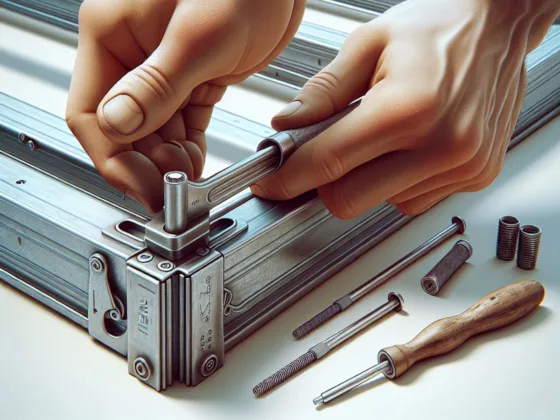Table of Contents Show
Sleep is essential. It’s as simple as that. The right bed is not just a piece of furniture. It’s where you spend a third of your life. It affects your sleep. And your sleep affects everything else.
This guide is about finding that bed. The perfect bed. It’s not the same for everyone. It depends on how you sleep. It depends on your body. It depends on what you like. But there are some things that are always true. A good bed supports your body. It suits your sleep style. It lasts long and fits your budget.
We’ll talk about different sleep styles. We’ll talk about what each style needs in a bed. We’ll discuss materials, sizes, and other things that matter. This is not about fancy words or complicated ideas. It’s about simple truths. It’s about how to choose a bed that will give you good sleep.
Understanding Sleep Styles
Everyone sleeps differently. Some sleep on their backs. Others on their sides. Then there are those who sleep on their stomachs. Your sleep style matters. It decides the kind of bed you need.
For Back Sleepers
If you sleep on your back, you need support. Your spine must stay aligned. A medium-firm mattress is good. It supports the lower back. It does not let the body sink too deep. The bed frame should be sturdy. It should not creak or sway. A good bed for a back sleeper is solid. It does not move much.
Read Also:
For Side Sleepers
Side sleepers need a different kind of support. Their bed must cushion the shoulders and hips. The mattress should be softer. It should let the body sink a little. This keeps the spine straight. The bed frame can be flexible. It can have slats. They adjust to the body’s weight.
For Stomach Sleepers
Stomach sleepers need a firm mattress. It keeps the body flat. This way, the spine does not curve too much. A bed that is too soft will cause back pain. The frame should be flat and even. It should support the mattress fully. No part of the mattress should sag.
Considering the Material
Mattresses come in many materials. Memory foam contours to the body. It is good for side sleepers. Latex is firmer. It suits back and stomach sleepers. Springs have bounced. They offer good support. They can be good for all sleep styles.
The bed frame material is important, too. Wood is sturdy and solid. It does not move much. Metal can be sturdy, but some are noisy. This can be a problem for light sleepers.
Size Matters
The size of the bed is important. More room means more comfort. A larger bed is better if you move a lot in your sleep. If you sleep still, a smaller bed can be enough. Think about the size of your room. The bed should fit well. It should not take up all the space.
Other Considerations
Think about allergies. Some materials can cause problems. Foam and latex are usually hypoallergenic. Springs can collect dust. Look for a mattress that suits your health.
Consider the bed’s height. It should be easy to get into and out of. Too high or too low can be a problem, especially if you have back pain.
Temperature and Sleep
The bed’s warmth matters. Some sleep hot. Others sleep cold. Memory foam can retain heat. This may be a problem in summer. Latex and springs allow more airflow. They keep the bed cool. Consider a mattress with cooling technology if you get too warm at night.
Lifespan and Durability
A bed is an investment. It should last. Look at the mattress’s lifespan. Some last longer than others. Foam can sag over time. Springs can lose their bounce. Latex is usually durable. Check the warranty. It tells about the bed’s quality.
Budget and Value
Beds range in cost. The cheapest are not always bad. The most expensive are not always the best. Value matters. It’s about what you get for what you pay. Sometimes, a little more money buys a lot more bed space. This can be wise. It can mean a bed that lasts longer. A bed that sleeps better.
Do not just look at the price tag. Think of the nights of sleep. A cheap bed that sleeps poorly is no bargain. A costly bed that sleeps well can be cheap in the long run. It is about balance. Spend what you need to sleep well. Do not spend more. Do not spend less. This is the economics of a good bed.
Testing Before Buying
Always test a bed. Lie on it. Turn on it. See how it feels. A bed may seem right in theory but not in practice. Most stores allow testing. Some online sellers offer trial periods. Use them. Sleep on the bed for a few nights. Make sure it’s right.
The Right Pillow
A bed is not just a mattress and frame. The pillow matters too. It must match the sleep style. A firm pillow for back sleepers. A softer one for side sleepers. A very flat or no pillow for stomach sleepers. The pillow helps keep the spine aligned. It is part of the bed.
Room Environment
The bed is part of the bedroom. The room affects sleep. It should be quiet and dark. It should have the right temperature. The bed’s position in the room matters. It should not be in a draft or in direct sunlight in the morning.
Final Thoughts
Choosing the right bed is personal. It depends on how you sleep. It depends on your body. It depends on your room. Take your time. Think about what you need. A good bed means good sleep. Good sleep is important.
It’s not just about the bed. It’s about the sleep. The bed is where you rest. It should be right. It should be comfortable. It should support your body. It should suit your style of sleeping. This is how you choose the perfect bed.










